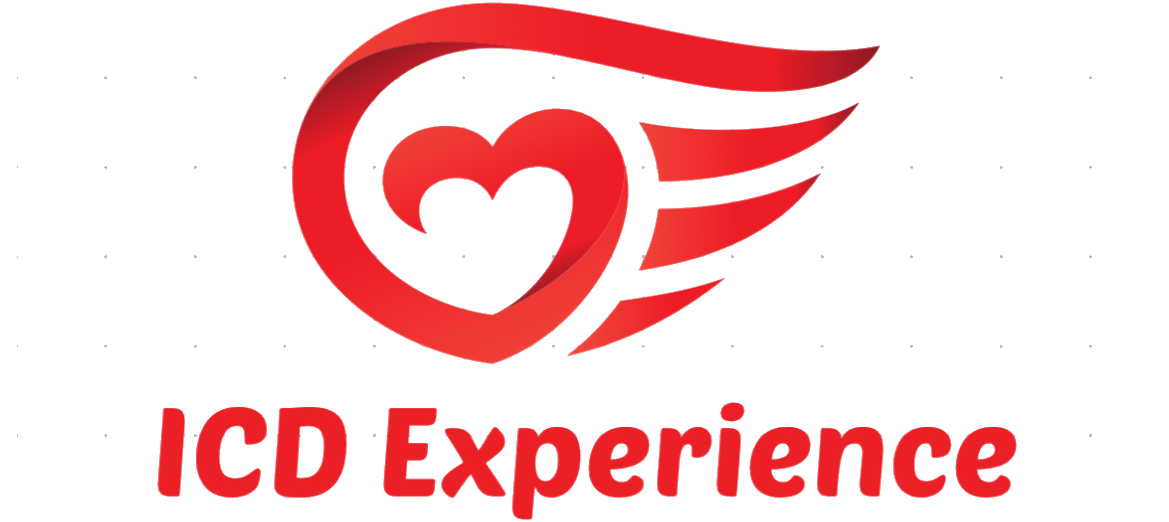Living with a heart condition often means embracing medical technology that helps monitor and protect your health. One of the most impactful devices in cardiac care is the Implantable Cardioverter Defibrillator, or ICD. If you or someone close to you has recently received one, understanding how to live with and care for an ICD is vital. In this guide, I’ll share everything I’ve learned—from firsthand experience and trusted medical sources—about living confidently with an ICD.
What Is an Implantable Cardioverter Defibrillator (ICD)?
An ICD is a small device implanted under the skin near the collarbone. It continuously monitors your heart’s rhythm and delivers life-saving electrical shocks if it detects dangerous arrhythmias. The device has two main parts: the pulse generator, which houses the battery and circuitry, and the leads—thin wires that connect the generator to your heart. These leads sense abnormal heart rhythms and deliver corrective impulses when needed.
Understanding the ICD’s purpose and how it operates can reduce fear and build trust in its function. For many, this device offers not just medical protection, but peace of mind. For more on how ICDs work, visit the Mayo Clinic’s overview.
Preparing for Life with an ICD
Your journey with an ICD doesn’t stop at surgery—it begins there. It’s important to follow your cardiologist’s recommendations closely. This means attending regular device checks, staying consistent with medications, and maintaining a heart-healthy lifestyle. At your follow-up visits, your healthcare team will check the battery life, review recorded heart data, and ensure the ICD is functioning properly.
Building a daily routine helps normalize your new reality. Include regular meals, physical activity, and time for rest. I found that creating structure made my days feel more predictable and reduced my anxiety.
Educating yourself—and your close friends or family—about how the ICD works can also be empowering. Knowing what to do during a shock event or recognizing warning signs gives everyone peace of mind.
Staying Active While Living with an ICD
Physical activity plays a major role in heart health, but many people are unsure what’s safe after an ICD implant. Most individuals can return to moderate exercise, but high-impact and contact sports may be off-limits.
Before starting any new activity, consult your healthcare provider. They may recommend a cardiac rehabilitation program—a medically supervised exercise and education plan tailored for heart patients.
Gentle yet effective options include:
- Walking or light hiking
- Stationary cycling
- Swimming (once healed)
- Yoga or tai chi for flexibility and stress relief
Avoid exercises that involve heavy lifting or sudden upper-body strain. These could affect the placement or function of your ICD.
For more activity tips, check out our guide on safe exercises for ICD patients.
Monitoring Your Health and ICD Maintenance
Keeping tabs on your health is essential. If you notice symptoms like dizziness, fainting, chest pain, or irregular heartbeats, call your doctor immediately. Redness, swelling, or warmth near the ICD site could signal infection and should be addressed right away.
Many modern ICDs include remote monitoring features that send real-time updates to your cardiologist. I personally found this reassuring—it felt like someone was keeping an eye on me, even between appointments.
Keep a journal of symptoms, triggers, and questions to bring to checkups. Staying engaged in your care gives your medical team better insights and helps you feel more in control.
Electromagnetic Interference and ICD Safety
ICDs are sensitive to strong magnetic fields and certain electronics. While most household items are safe, some require caution. Keep cell phones at least six inches from your device—use the opposite ear when talking and avoid carrying your phone in a chest pocket.
When going through airport security or entering places with metal detectors, let personnel know you have an ICD. Ask for a manual pat-down instead of stepping through the scanners. Always carry a medical ID card identifying your device.
Be mindful around induction cooktops, large stereo speakers, industrial machinery, or high-voltage equipment. If you work in an environment with strong electrical fields, talk to your doctor or device manufacturer for safety guidance.
Emotional Well-Being While Living with an ICD
Living with an ICD doesn’t just challenge the body—it affects your emotions. I struggled with fear after my first shock. It’s natural to worry about when the next one might come. But over time, I found coping mechanisms that helped.
Mindfulness, deep breathing, and guided meditation can significantly reduce anxiety. I also began therapy with someone experienced in chronic health issues, and that made a huge difference.
Support groups are another great outlet. Sharing experiences with people who truly understand can lift emotional burdens. Whether online or in person, these communities remind you that you’re not alone.
For specific support strategies, see our post on managing anxiety with an ICD.
If anxiety, depression, or PTSD symptoms persist, don’t wait to get help. Therapies like CBT (Cognitive Behavioral Therapy) are proven to work and can bring relief.
Hygiene and Post-Surgical ICD Care
Proper hygiene is essential—especially right after your ICD implantation. Your doctor will give you detailed wound care instructions, and it’s important to follow them exactly.
Keep the area clean and dry. Avoid lotions, powders, or anything that might irritate the incision. Wash hands thoroughly before touching the site. If you notice redness, swelling, warmth, discharge, or fever, call your provider immediately. Infections can escalate quickly but are highly treatable if caught early.
Over the long term, you won’t need to treat the ICD site daily, but good hygiene habits still matter—especially after workouts or travel.
Traveling with an ICD Safely
Travel is absolutely possible with an ICD—it just requires preparation. I’ve flown across the country multiple times since my implant, and it gets easier each time.
Pack a small travel kit with:
- Medications and backup prescriptions
- A medical ID card and ICD information
- Contact numbers for your cardiologist
- A copy of your recent medical records (especially if traveling internationally)
At airports, notify security before walking through metal detectors. You may request a manual check instead. During flights, try to move your legs regularly and stay hydrated to reduce clot risks.
Also, research nearby hospitals or cardiology clinics at your destination. Having a “just in case” plan brings peace of mind.
Heart-Healthy Lifestyle with an ICD
Your diet plays a major role in supporting your heart and your ICD’s performance. Emphasize:
- Fruits and vegetables
- Whole grains
- Lean proteins like chicken, fish, or legumes
- Healthy fats from sources like olive oil, nuts, or avocado
Limit or avoid:
- Processed foods and added sugars
- Excessive salt and saturated fats
- High-cholesterol foods
Omega-3-rich foods such as salmon and flaxseed may also help regulate heartbeat. Staying well-hydrated is another simple but important way to support heart rhythm and energy.
Learn more at our Heart-Healthy Diet page.
Long-Term ICD Care and Battery Monitoring
Your ICD will need routine checkups and eventual battery replacement. Most devices last five to ten years, and your cardiologist will monitor battery levels during visits. Replacing the battery is usually a simpler procedure than the original implant.
With remote monitoring, many patients only need to visit the clinic once or twice a year unless something unusual comes up. Use this time to ask questions, discuss symptoms, or report shocks.
Keep an up-to-date medical record that includes your device model, implantation date, medications, and emergency contacts. It’s helpful in emergencies and supports seamless care if you switch providers.
Navigating Social Life and Relationships with an ICD
Relationships can shift after an ICD. It’s normal for loved ones to have questions or fears. The best way to reduce their anxiety—and yours—is through open, honest conversations.
Explain how the ICD works, what to do if you experience a shock, and what symptoms to watch for. Reassure others that you are taking care of your health. Help them understand that support and normalcy—not protection or fear—are what you really need.
Socializing, hobbies, and intimacy are all part of a full life. Don’t isolate yourself. Just stay aware of your body’s signals, and avoid overexertion in unfamiliar environments.
FAQ: Living with an ICD
How can I stay active while living with an ICD?
You can stay active by engaging in moderate exercises like walking, swimming, or cycling. Always consult your doctor before starting any new routine. Avoid contact sports or heavy lifting that may interfere with the device.
What should I avoid with an ICD?
Avoid strong magnets, industrial equipment, and close prolonged exposure to devices like induction stoves or airport security scanners. Always carry your medical ID and consult your provider before using unfamiliar electronics.
How do I monitor and maintain my ICD over time?
Attend regular checkups to ensure your ICD is working properly. Remote monitoring helps your doctor track data in real time. Battery checks and software updates are typically reviewed every few months.
Can I travel safely with an ICD?
Yes, traveling with an ICD is safe with the right planning. Carry your medical card, inform airport security, and keep medications with you. It's also wise to research nearby hospitals at your destination.
How can I manage anxiety or stress related to my ICD?
Joining support groups, practicing relaxation techniques, and speaking to a mental health professional can help. Emotional wellness is as important as physical care when adjusting to life with an ICD.
Conclusion: Living Well with an ICD
Living with an ICD involves changes, but it does not mean living in fear. With regular checkups, healthy habits, emotional support, and a bit of planning, you can live a strong and fulfilling life.
You’re not alone. Millions of people—including myself—are living proof that an ICD is not the end of your freedom. It’s the beginning of a second chance.
For deeper guidance and personal stories, explore my book: Understanding ICD Implants: A Comprehensive Guide. It’s written by a patient, for patients—just like you.













6 Comments